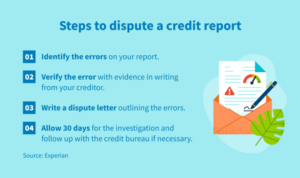Diving into the world of building an investment portfolio, this introduction sets the stage for a journey towards financial growth and stability. From understanding the basics to navigating complex strategies, this guide will equip you with the knowledge needed to make informed investment decisions.
As we explore the key elements of creating a successful investment portfolio, you’ll discover the secrets to maximizing returns and minimizing risks in the dynamic world of finance.
Understanding Investment Portfolios

Investment portfolios are collections of different assets such as stocks, bonds, and real estate that an individual or entity owns with the goal of achieving specific financial objectives. The purpose of an investment portfolio is to help grow wealth over time, provide income, and protect against market risks.
Importance of Diversification
Diversification is crucial in an investment portfolio as it helps spread risk across various assets. By investing in different asset classes, sectors, and regions, investors can reduce the impact of a single investment’s poor performance on the overall portfolio. This strategy helps to mitigate losses and increase the chances of positive returns.
Types of Assets in a Portfolio
- Stocks: Shares of ownership in a company that offer potential for capital appreciation and dividends.
- Bonds: Debt securities issued by governments or corporations that provide regular interest payments and return of principal at maturity.
- Real Estate: Physical properties such as residential, commercial, or industrial real estate that can generate rental income and appreciate in value over time.
Setting Investment Goals
Setting investment goals is a crucial step in the process of building an investment portfolio. It involves determining what you want to achieve financially and setting clear objectives to guide your investment decisions.
Identifying different investment objectives is essential as it helps you tailor your portfolio to meet your specific needs. Some common investment goals include saving for retirement, building wealth over time, funding education expenses, or achieving financial independence.
Role of Risk Tolerance
Determining your risk tolerance is a key factor in setting investment goals. Risk tolerance refers to your ability and willingness to withstand fluctuations in the value of your investments. It plays a significant role in shaping your investment objectives and helps you choose investments that align with your comfort level.
- Understanding your risk tolerance can help you determine the appropriate mix of investments in your portfolio.
- Investors with a higher risk tolerance may be more inclined to take on riskier investments in pursuit of higher returns.
- Conversely, investors with a lower risk tolerance may prioritize capital preservation and opt for more conservative investments.
Asset Allocation
Asset allocation is a crucial concept in portfolio construction as it involves spreading your investments across different asset classes to manage risk and optimize returns. By diversifying your portfolio, you can potentially reduce the impact of market fluctuations on your overall investment performance.
Significance of Asset Allocation
Asset allocation plays a significant role in determining the overall risk and return profile of your investment portfolio. It helps you achieve a balance between risk and reward based on your financial goals and risk tolerance. A well-thought-out asset allocation strategy can help you achieve long-term financial success by ensuring that your investments are aligned with your objectives.
Strategies for Asset Allocation
- Determine your risk tolerance: Assess how much risk you are willing to take on and allocate your assets accordingly. For example, if you have a higher risk tolerance, you may allocate more funds to equities than to fixed-income securities.
- Consider your investment goals: Your asset allocation should be aligned with your investment objectives. For instance, if you are saving for retirement, you may have a more conservative asset allocation compared to someone saving for a short-term goal.
- Rebalance regularly: Periodically review and adjust your asset allocation to ensure it remains in line with your goals and risk tolerance. Rebalancing involves buying and selling assets to maintain your desired asset mix.
Examples of Asset Allocation for Different Investors
| Investor Profile | Asset Allocation |
|---|---|
| Conservative Investor | 60% Fixed-Income, 30% Equities, 10% Cash |
| Moderate Investor | 40% Fixed-Income, 50% Equities, 10% Real Estate |
| Aggressive Investor | 20% Fixed-Income, 70% Equities, 10% Commodities |
Investment Strategies
Investment strategies are crucial in determining how you approach building your investment portfolio. Understanding different strategies can help you make informed decisions based on your financial goals and risk tolerance.
Value Investing vs. Growth Investing vs. Index Investing
- Value Investing: Focuses on buying undervalued stocks with the potential to increase in value over time. Investors look for companies trading below their intrinsic value.
- Growth Investing: Involves investing in companies expected to grow at a faster rate than the market average. Investors target companies with high growth potential.
- Index Investing: Involves passive investing by tracking a specific market index, such as the S&P 500. Investors aim to match the performance of the overall market.
“Value investing seeks to buy $1 for 50 cents, while growth investing aims to buy $1 for $1.50.”
Active vs. Passive Investing
- Active Investing: Involves frequent buying and selling of investments in an attempt to outperform the market. Requires continuous monitoring and research.
- Passive Investing: Involves a buy-and-hold strategy, where investors aim to match market returns rather than beat them. Typically lower cost and less time-intensive.
“Active investing requires more time and effort, while passive investing offers a more hands-off approach with lower fees.”
Choosing the Right Investment Strategy
- Consider your risk tolerance: Determine how much risk you are willing to take on with your investments.
- Align with your goals: Choose a strategy that aligns with your long-term financial goals, whether it’s capital preservation or aggressive growth.
- Stay informed: Continuously educate yourself on different strategies and adapt based on market conditions and personal preferences.
Monitoring and Rebalancing
Regularly monitoring an investment portfolio is crucial to ensure that it aligns with your financial goals and risk tolerance. By keeping an eye on your investments, you can make informed decisions and take timely actions to maximize returns and minimize losses.
Importance of Monitoring
- Stay informed about the performance of your investments.
- Identify any shifts in the market that may impact your portfolio.
- Adjust your strategy based on changing economic conditions.
- Avoid emotional decision-making during market fluctuations.
Rebalancing Process
- Review your asset allocation regularly to ensure it meets your investment objectives.
- Compare your current asset allocation to your target allocation.
- Sell overperforming assets and buy underperforming ones to maintain the desired balance.
- Consider tax implications and transaction costs when rebalancing your portfolio.
Guidelines for Adjustments
- Rebalance annually or when your portfolio drifts significantly from your target allocation.
- Consider making adjustments based on your investment horizon and risk tolerance.
- Avoid making frequent changes to your portfolio due to short-term market fluctuations.
- Consult with a financial advisor before making major adjustments to your investment strategy.






